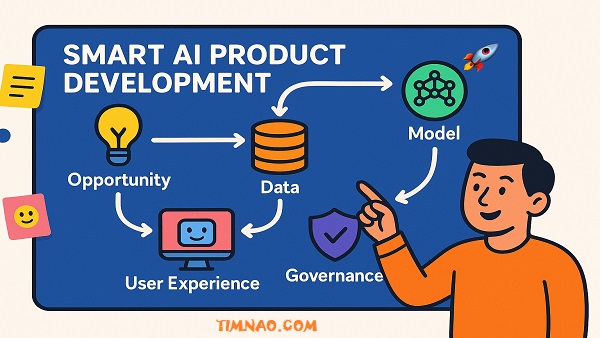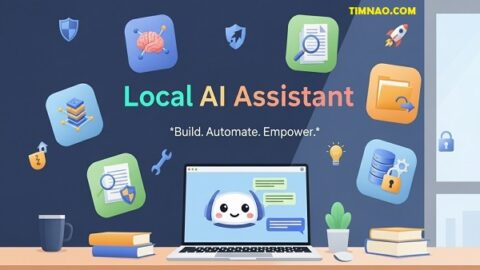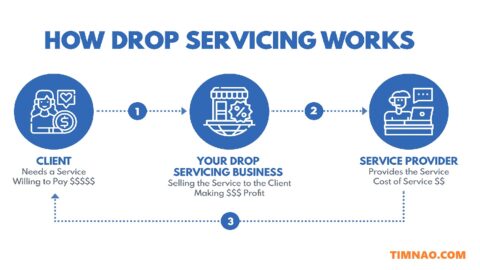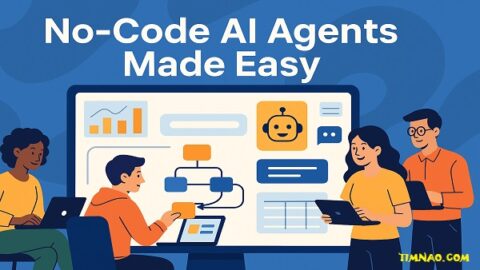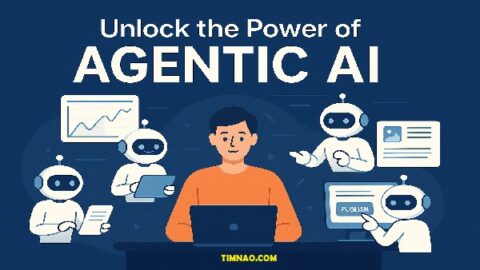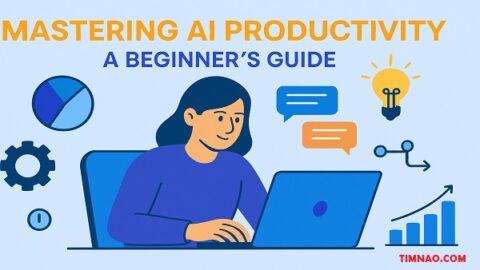🚀 Unlock Astonishing Success: Your Ultimate Beginner’s Guide to AI Product Development!
The world is buzzing about Artificial Intelligence (AI), and for a good reason! From smarter recommendations on your favorite streaming service to groundbreaking medical diagnostics, AI is reshaping industries and our daily lives. But have you ever wondered what goes into building AI products? It might seem like a futuristic, complex endeavor reserved only for tech wizards, but the truth is, with the right guidance, even beginners can grasp the fundamentals of AI product development.
This ultimate guide is your friendly roadmap to understanding how Artificial Intelligence products are born – from a spark of an idea to a game-changing solution. We’ll demystify the jargon, explore the key stages, and provide you with actionable insights to start your journey. Whether you’re an aspiring product manager, a curious entrepreneur, or simply fascinated by AI, get ready to unlock the secrets to creating impactful AI!
What You’ll Discover Inside:
- Foundational knowledge about AI and its transformative potential.
- How to spot incredible opportunities for AI innovation.
- A step-by-step walkthrough of the AI product development lifecycle, including 7 crucial steps for success.
- Insights into crucial technologies like Machine Learning and Generative AI.
- Tips for designing user-centric AI experiences.
- Guidance on ethical considerations, governance, and launching your AI product.
- Actionable advice to kickstart your learning journey.
Let’s dive in and explore the exhilarating world of AI product development!
Table of Contents 📜
-
🌟 Part 1: Stepping into the AI Universe – The Grand Discovery
- 🤖 What Exactly Are AI Products and Why Are They So Revolutionary?
- 💡 Spotting Golden Opportunities: Where Can AI Make a Real Difference?
- 🛠️ Laying the Groundwork: Data, Ethics, and Refining Your AI Vision
-
🏗️ Part 2: From Dream to Reality – The Art of Building AI Products
- 🗺️ Your First Expedition: The 7 Crucial Steps in AI Product Development
- 🧠 Demystifying the Magic: Core AI Technologies Explained Simply
- 🎨 Designing with Empathy: Crafting User-Friendly Artificial Intelligence Products
-
🚀 Part 3: Launch, Learn, and Lead – Mastering AI Product Adoption
- 🎉 Liftoff! Navigating Your AI Product Launch and Early Growth
- 🛡️ The Guardian’s Handbook: AI Governance, Security, and User Privacy
- 🤝 Building Bridges: Team Collaboration and Engaging Your Audience
- 🔭 The Ever-Evolving Frontier: Continuous Learning in AI Product Development
🌟 Part 1: Stepping into the AI Universe – The Grand Discovery
Before you can embark on the exciting journey of building AI products, it’s essential to understand what they are, why they matter, and where the most promising opportunities lie. This first part is all about discovery – opening your eyes to the potential of AI.
🤖 What Exactly Are AI Products and Why Are They So Revolutionary?
At its heart, an AI product is a piece of software or a system that uses Artificial Intelligence techniques to perform tasks that typically require human intelligence. Think about things like learning, problem-solving, decision-making, understanding language, or recognizing patterns. Unlike traditional software that follows explicit pre-programmed instructions, Artificial Intelligence products can learn from data, adapt to new inputs, and make predictions or take actions autonomously.
The revolutionary aspect of AI products stems from their ability to:
- Automate Complex Tasks: AI can handle repetitive, data-heavy, or even creatively demanding tasks, freeing up human potential. Imagine AI drafting initial marketing copy or analyzing thousands of customer reviews in seconds.
- Provide Deep Insights: AI excels at finding hidden patterns and correlations in vast datasets that humans might miss. This leads to smarter business decisions, from predicting market trends to understanding customer behavior.
- Personalize Experiences at Scale: From personalized movie recommendations on Netflix to tailored learning paths in educational apps, AI can create unique experiences for millions of users simultaneously.
- Solve Previously Unsolvable Problems: AI is pushing boundaries in scientific research, healthcare (like developing new drugs), and sustainability by tackling challenges once deemed too complex.
The impact is undeniable. The global AI market is already valued at hundreds of billions of dollars and is projected to experience continued substantial growth. Businesses are increasingly adopting AI, with a significant majority of firms expected to employ AI in the coming years, recognizing its power to drive growth and efficiency. This isn’t just a fleeting trend; it’s a fundamental shift in how we create value.
💡 Spotting Golden Opportunities: Where Can AI Make a Real Difference?
The first crucial step in AI product development is identifying a meaningful problem to solve or a valuable opportunity to seize. It’s tempting to jump on the AI bandwagon just because it’s “hot,” but the most successful Artificial Intelligence products address genuine user needs or create significant new value.
So, how do you find these golden opportunities?
- Listen to Your Users (and Non-Users!): What are their biggest pain points? Where do they struggle? What tasks are tedious or time-consuming for them? Customer feedback, surveys, and interviews are invaluable, and understanding user needs is a cornerstone of great product development.
- Analyze Existing Processes: Look within your own work or industry. Are there inefficiencies? Are decisions being made based on gut feelings rather than data? AI can often optimize existing workflows or provide data-driven decision support.
- Explore Data You Already Have: Many organizations sit on a goldmine of data. Could this data be used to train an AI model that provides new insights, automates a process, or personalizes an experience?
- Stay Curious About AI Advancements: New AI capabilities are emerging constantly. Keep an eye on trends like Generative AI (think OpenAI’s ChatGPT for content creation), Agentic AI (AI that can take actions), and Multimodal AI (AI that understands text, images, and audio). These advancements open up entirely new possibilities for building AI products. Specialized tools and trend analysis services can also help in spotting meaningful technological shifts.
- Think “AI-First” for New Ventures: If you’re starting something new, consider how AI could be a core differentiator from the outset, rather than an afterthought.
When evaluating opportunities, it’s useful to consider a structured approach, thinking about benefits like automation, improvement, personalization, innovation, convenience, and even emotional benefits. For beginners, focusing on a clear, well-defined problem where AI offers a distinct advantage over traditional solutions is often a good starting point.
🛠️ Laying the Groundwork: Data, Ethics, and Refining Your AI Vision
Once you’ve identified a promising opportunity, some crucial groundwork is needed before diving into full-scale development. This stage is about validating your idea, understanding the resources required, and, importantly, considering the ethical implications.
- Data is the Fuel: AI models learn from data. You need to ask:
- What data is needed for this AI product?
- Do we have access to this data? Is it high quality, relevant, and sufficient?
- Are there any privacy or regulatory constraints related to this data? (e.g., GDPR, CCPA). It’s important to understand the difference between unlabeled data (raw data without predefined tags) and labeled data (data with tags that tell the AI what to learn). Many AI applications, especially in predictive AI, require labeled data, which can be time-consuming to prepare.
- Ethical Considerations are Non-Negotiable: AI has the power to do immense good, but it also carries risks if not developed and deployed responsibly. Key ethical considerations include:
- Bias: AI models can inherit biases present in their training data, leading to unfair or discriminatory outcomes. It’s crucial to strive for fairness and inclusivity.
- Transparency & Explainability: Can you understand (at least to some degree) how your AI makes decisions? This is vital for building trust, especially in critical applications.
- Accountability: Who is responsible if an AI system makes a mistake with harmful consequences?
- Privacy & Security: How will user data be protected? How will the AI model itself be secured from misuse or theft? Many organizations, including Google with its AI Principles, offer guidelines for responsible development. Frameworks such as the NIST AI Risk Management Framework also provide valuable guidance for organizations.
- Refine Your Vision & Define Success:
- Clearly articulate the value proposition of your AI product. What specific problem does it solve, and for whom?
- Define what success looks like. What are the Key Performance Indicators (KPIs)? Is it user engagement, task completion rate, cost savings, or something else?
- A helpful mental model involves considering both the opportunity space (the problem, the value) and the solution space (data, intelligence, user experience, governance) to ensure a holistic approach.
This initial discovery and groundwork phase is about moving from a vague idea to a more concrete, validated concept. It involves asking tough questions and being willing to iterate or even pivot if necessary.
🏗️ Part 2: From Dream to Reality – The Art of Building AI Products
With a solid understanding of your opportunity and the necessary groundwork in place, it’s time to roll up your sleeves and start the actual process of building AI products. This part delves into the development lifecycle, the core technologies involved, and the importance of user-centric design.
🗺️ Your First Expedition: The 7 Crucial Steps in AI Product Development
While the specifics can vary, the AI product development lifecycle generally follows an iterative process. It’s rarely a linear path; you’ll often cycle through these stages, learning and refining as you go. Here are 7 crucial steps that form a robust blueprint for beginners embarking on their AI product journey:
- Step 1: Deep Dive into the Problem & Define Clear Goals This foundational step involves revisiting your initial idea with a critical eye. Clearly articulate the specific problem your AI product will solve and for whom. Define precise, measurable, achievable, relevant, and time-bound (SMART) goals. What specific AI task (e.g., classification, generation, prediction, automation) will address the core user need or business challenge? A well-defined problem and clear objectives will guide the entire AI product development process.
- Step 2: Strategic Data Sourcing & Meticulous Preparation Data is the lifeblood of any AI system. This step involves identifying the necessary data, sourcing it ethically and legally, and then meticulously preparing it. Data preparation includes cleaning (handling missing values, errors, inconsistencies), transforming data into a usable format, and potentially feature engineering (selecting or creating the most relevant data attributes to improve model performance). Quality data is paramount for building AI products that are accurate and reliable.
- Step 3: Thoughtful AI Model Selection & Initial Prototyping With your data ready, the next step is to choose an appropriate AI algorithm or model architecture. This decision depends heavily on the problem you’re solving (Step 1) and the nature of your data (Step 2). For beginners, this might involve starting with simpler models or leveraging pre-trained models. Crucially, this stage should also include building an initial prototype or a Minimum Viable Product (MVP) to quickly test core assumptions and gather early feedback before investing heavily in full-scale development.
- Step 4: Rigorous Model Training & Fine-Tuning This is where the “learning” in machine learning happens. You’ll feed your prepared training data to the selected model. The model adjusts its internal parameters to identify patterns and relationships within the data. This process can be computationally intensive and may require significant time. Fine-tuning, especially for pre-trained models like LLMs, involves further training the model on a smaller, task-specific dataset to adapt its capabilities to your unique requirements.
- Step 5: Comprehensive Model Evaluation & Iterative Refinement Once a model is trained, it must be rigorously evaluated to ensure it performs well and generalizes to new, unseen data. This involves using a separate validation dataset to tune model parameters (hyperparameters) and a test dataset for an unbiased assessment of its performance using relevant metrics (e.g., accuracy, precision, recall, F1-score). If the model doesn’t meet the desired performance, you’ll iterate—revisiting data preparation, model selection, or training parameters. This iterative loop is central to successful AI product development.
- Step 6: Strategic Deployment & Seamless Integration After satisfactory evaluation, the AI model needs to be deployed into a production environment where users can access it. This involves integrating the model into an application (web, mobile, API), setting up the necessary infrastructure (often cloud-based), and ensuring the system is scalable and reliable. Careful planning for deployment ensures that your Artificial Intelligence product can deliver value consistently to its users.
- Step 7: Continuous Monitoring, User Feedback & Evolution The journey doesn’t end at deployment. Post-launch, it’s vital to continuously monitor the AI model’s performance in the real world for issues like “model drift” (where performance degrades as new data differs from training data). Equally important is collecting user feedback to understand how the AI product is being used, whether it’s meeting needs, and where improvements can be made. This feedback loop fuels ongoing iteration, updates, and the long-term evolution of your AI product.
This 7-step iterative cycle—from problem definition through continuous evolution—is at the heart of successful AI product development, ensuring that Artificial Intelligence products are not just technologically sound but also genuinely valuable and user-centric. The iterative nature, especially with machine learning, is a key theme; launching early (with caution) and optimizing based on production feedback is often a crucial strategy.
🧠 Demystifying the Magic: Core AI Technologies Explained Simply
The term “AI” encompasses a vast range of technologies. For beginners, understanding a few core concepts is key:
- Machine Learning (ML): This is a subfield of AI where systems learn from data without being explicitly programmed for each task.
- Supervised Learning: The model learns from labeled data. You provide input-output pairs, and the model learns to predict the output for new inputs. Examples: image classification (labeling images as “cat” or “dog”), spam detection.
- Unsupervised Learning: The model learns from unlabeled data, finding patterns or structures on its own. Examples: customer segmentation (grouping similar customers), anomaly detection.
- Reinforcement Learning: The model learns by interacting with an environment and receiving rewards or penalties for its actions.1 Example: training a robot to navigate a maze. Platforms like Google’s TensorFlow and Facebook’s PyTorch are popular open-source ML libraries.
- Deep Learning: A subfield of Machine Learning that uses “deep” neural networks (networks with many layers) to learn complex patterns from large amounts of data. Deep learning powers many recent AI breakthroughs, including advanced image recognition and natural language processing.
- Natural Language Processing (NLP): Enables computers to understand, interpret, and generate human language2 (text and speech). NLP is behind chatbots, machine translation, sentiment analysis, and much more.
- Computer Vision: Enables computers to “see” and interpret visual information from images and videos. Used in self-driving cars, facial recognition, and medical image analysis.
- Generative AI: A newer, exciting area of AI where models can create new, original content, such as text, images, audio, and even code.
- Large Language Models (LLMs): These are deep learning models trained on massive amounts of text data, enabling them to understand and generate human-like text.3 OpenAI’s GPT series (like ChatGPT), Google’s Gemini, and Anthropic’s Claude are prominent examples. LLMs are powering a revolution in how we interact with AI. Key skills in this area involve exploring and evaluating these models, effective prompt engineering (crafting inputs for LLMs), understanding Retrieval-Augmented Generation (RAG – enhancing LLMs with external knowledge), and fine-tuning LLMs for specific tasks.
- Other Generative Models: Models like DALL-E, Midjourney, and Stable Diffusion can generate images from text prompts.
- Agentic AI: A rapidly evolving frontier in AI involves systems that can not only process information and generate outputs but also take actions and make decisions autonomously to achieve goals. This area is seeing significant advancements.
Understanding these core technologies will help you make informed decisions when selecting the right tools and approaches for your AI product development project. For beginners, leveraging pre-trained models from platforms like Hugging Face or using AI services from cloud providers can significantly lower the barrier to entry.
🎨 Designing with Empathy: Crafting User-Friendly Artificial Intelligence Products
An AI model, no matter how powerful, is only effective if users can interact with it easily and trust its outputs. User Experience (UX) design for Artificial Intelligence products presents unique challenges and opportunities, particularly when designing for the inherent uncertainty in some AI outputs.
Key considerations for AI UX:
- Manage Expectations & Build Trust:
- Transparency: Be clear about what the AI can and cannot do. Don’t overpromise.
- Explainability (where possible): If feasible, provide users with some insight into why the AI made a particular decision or recommendation. Even simple confidence scores can help.
- Handling Errors Gracefully: AI models are not perfect and will make mistakes. Design how your product communicates errors and allows users to correct them or provide feedback.
- Design for Probabilistic Outcomes: Unlike traditional software, AI outputs can be uncertain or variable. The UI should help users navigate this.
- Provide Guidance: Help users formulate effective inputs (e.g., prompt suggestions for LLMs).
- Show Multiple Options: Sometimes, presenting a few AI-generated options can be better than one definitive answer.
- Allow User Control & Override: Users should feel in control. Provide ways for them to correct AI suggestions or make the final decision.
- Focus on the Human-AI Collaboration: Often, the best AI products don’t replace humans but augment their abilities. Design the interaction to be a partnership.
- Assisted Intelligence: AI provides support for human tasks (e.g., grammar suggestions).
- Augmented Intelligence: AI actively collaborates with humans, offering suggestions and insights (e.g., a design tool suggesting layout options).
- Autonomous Intelligence (with caution): AI performs tasks independently, but human oversight is often still crucial, especially in high-stakes scenarios.
- Iterate Based on User Feedback: Continuously test your AI product with real users and gather feedback. User research is just as important (if not more so) for AI products as it is for traditional software. Tools like Miro can be helpful for collaborative design and feedback sessions.
- Consider Different Interface Types:
- Graphical User Interfaces (GUIs): Familiar and structured.
- Conversational Interfaces (e.g., Chatbots, Voice Assistants): Offer flexibility and natural interaction, but can be challenging to design well.
- Hybrid Interfaces: Combine graphical elements with conversational capabilities. This is a growing trend.
Building user trust is paramount in AI product development. A poorly designed AI product, even with a brilliant model underneath, will likely fail.
🚀 Part 3: Launch, Learn, and Lead – Mastering AI Product Adoption
Developing a functional AI model and a user-friendly interface is a huge accomplishment, but the journey doesn’t end there. Successfully launching your AI product, ensuring it’s used responsibly, and fostering its growth requires careful planning and continuous effort. This final part covers the crucial aspects of adoption.
🎉 Liftoff! Navigating Your AI Product Launch and Early Growth
Launching an AI product involves more than just flipping a switch. A phased approach is often best, especially for innovative or complex AI solutions.
- Internal Testing & Dogfooding: Before exposing your product to external users, thoroughly test it internally. “Dogfooding” (using your own product) can uncover many issues.
- Beta Testing / Pilot Program: Release your product to a limited group of target users. This allows you to gather real-world feedback, identify bugs, and understand how people actually use the AI in their context. This helps refine the product before a wider launch.
- Staged Rollout: Instead of launching to everyone at once, consider a staged rollout (e.g., by geography, or to a percentage of users). This helps manage server load and allows you to quickly address any unforeseen problems.
- Clear Communication & Onboarding: When users first encounter your AI product, they need to understand its value, how to use it effectively, and its limitations. Provide clear onboarding materials, tutorials, and FAQs.
- Monitoring Performance & User Behavior: Post-launch, closely monitor:
- AI Model Performance: Is it performing as expected in the real world? Are there signs of model drift (performance degradation over time as data changes)?
- System Performance: Is the product fast and reliable?
- User Engagement & Retention: Are users actively using the product? Are they coming back?
- User Feedback Channels: Make it easy for users to report issues, ask questions, and provide suggestions.
The early days after launch are critical for learning and iterating. Be prepared to make quick adjustments based on real-world data and user feedback. This iterative improvement is key to the long-term success of Artificial Intelligence products.
🛡️ The Guardian’s Handbook: AI Governance, Security, and User Privacy
With great power comes great responsibility. As creators of AI products, we have an obligation to ensure they are safe, fair, secure, and respect user privacy. This falls under the umbrella of AI Governance, a topic of growing global importance with regulations like the EU AI Act emerging and shaping best practices.
Key pillars of AI Governance:
- Security: Protecting your AI system and data is paramount.
- Data Security: Secure the data used to train your models and any user data the product handles. Implement robust access controls and encryption.
- Model Security: Protect your AI models from theft, unauthorized access, or adversarial attacks (inputs designed to fool the model).
- Usage Security: Prevent misuse of your AI product (e.g., generating harmful content, prompt injection attacks where users try to override safety instructions).
- Privacy: AI products often rely on data, making privacy a critical concern.
- Privacy by Design: Build privacy considerations into your product from the very beginning.
- Transparency: Be clear with users about what data you collect, how it’s used, and how it benefits them.
- Compliance: Adhere to relevant data privacy regulations (e.g., GDPR, CCPA).
- Anonymization/Pseudonymization: Where possible, de-identify data to protect user privacy.
- Mitigating Bias & Ensuring Fairness: AI models can perpetuate and even amplify existing societal biases if not carefully designed and tested.
- Diverse & Representative Data: Strive to train your models on data that reflects the diversity of your user base.
- Bias Detection & Mitigation Techniques: Use tools and techniques to identify and reduce bias in your models and their outputs.
- Regular Audits: Periodically audit your AI systems for fairness.
- Transparency & Explainability (Revisited): While perfect explainability is hard for complex AI, strive for transparency in how your AI systems work and make decisions. This builds trust and allows for accountability.
- Accountability & Oversight: Establish clear lines of responsibility for your AI systems. Who is accountable if something goes wrong? Implement human oversight mechanisms, especially for high-risk applications.
Current best practices in AI governance emphasize creating multi-disciplinary teams, establishing clear frameworks, continuous monitoring, and adapting to evolving regulations. Developing and adhering to a strong AI governance framework is no longer optional; it’s essential for building sustainable and trustworthy Artificial Intelligence products.
🤝 Building Bridges: Team Collaboration and Engaging Your Audience
Building successful AI products is rarely a solo endeavor. It requires effective collaboration within your team and ongoing engagement with your users and stakeholders. AI product development is truly a team sport.
- Cross-Functional AI Teams: You’ll typically need expertise in:
- Product Management: Defining the vision, strategy, and roadmap.
- Data Science & AI Development: Building and training the AI models. This includes roles like Machine Learning Engineers, Data Scientists, and Prompt Engineers.
- Software Engineering: Building the application, infrastructure, and APIs.
- UX Design: Ensuring the product is user-friendly and trustworthy.
- Domain Expertise: Subject matter experts who understand the specific field the AI is being applied to.
- Legal & Compliance: Navigating the regulatory landscape. Effective communication and a shared understanding of goals are crucial for these diverse teams to work together seamlessly.
- Communicating with Stakeholders: You’ll need to communicate the value, progress, and challenges of your AI product to various stakeholders, including executives, investors, sales & marketing teams, and customer support. Tailor your communication to their level of technical understanding and their specific interests.
- Engaging and Educating Users:
- Communicate Value Clearly: Help users understand how the AI product benefits them.
- Educate on Proper Usage: Provide guidance on how to get the best results from the AI.
- Manage Expectations (again!): Be transparent about the AI’s capabilities and limitations.
- Foster a Feedback Loop: Encourage users to provide feedback, report issues, and even co-create solutions. Turning users into active participants or “co-creators” can be incredibly powerful for product evolution.
Building a community around your AI product and fostering open dialogue can drive adoption, loyalty, and continuous improvement.
🔭 The Ever-Evolving Frontier: Continuous Learning in AI Product Development
The field of Artificial Intelligence is one of the most rapidly evolving areas of technology. New models, tools, techniques, and ethical considerations emerge constantly. As someone involved in AI product development, a commitment to continuous learning is essential.
- Stay Updated on AI Trends: Follow reputable AI news sources, research from leading institutions and labs, industry conferences, and thought leaders. Key trends include the rise of Agentic AI, Multimodal AI, the increasing role of AI in cybersecurity, a greater focus on Responsible AI, and ongoing efforts in AI regulation worldwide.
- Experiment with New Tools & Platforms: Don’t be afraid to try out new AI tools and platforms as they become available. Hands-on experience is invaluable.
- Learn from Your Data & Users: Your own product’s data and user feedback are rich sources of learning. Continuously analyze them to identify areas for improvement and new opportunities.
- Upskill Your Team: Encourage and support ongoing learning and development for your team members.
- Embrace Adaptability: Be prepared to adapt your AI products and strategies as the technology and the market evolve. What works today might need to be rethought tomorrow.
The journey of AI product development is not a one-time project but an ongoing process of innovation, learning, and adaptation. By embracing this mindset, you can continue to create Artificial Intelligence products that are not only powerful and effective but also responsible and beneficial to society.
Congratulations! You’ve journeyed through the fundamental landscape of AI product development. From understanding the core concepts and spotting opportunities to navigating the development process (including the 7 crucial steps) and considering the vital aspects of adoption and governance, you’re now equipped with a foundational understanding.
The world of AI is vast and dynamic, but it’s also incredibly exciting. The key is to start small, stay curious, prioritize ethical considerations, and always keep the user at the center of your efforts. Whether you aim to build the next revolutionary AI application or simply want to leverage AI to solve problems in your current field, the principles discussed here will serve as a valuable guide.
The future is intelligent, and you have the potential to help shape it. Happy building!
Reference video:

